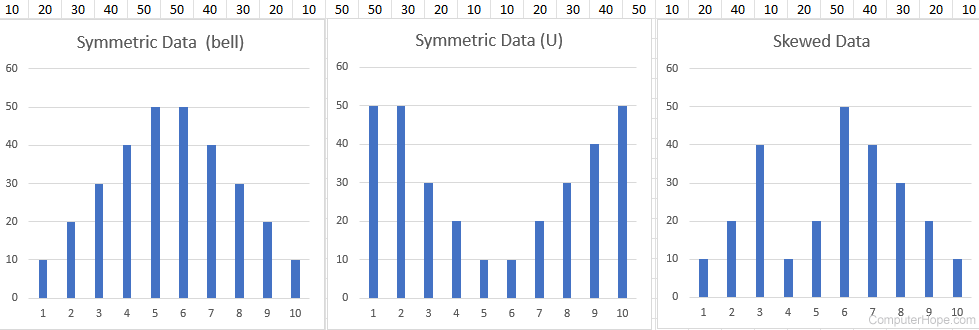Symmetry
Symmetry may refer to any of the following:
1. With communications, see symmetrical.
2. With aesthetics or patterns, symmetric refers to a quality where an object can be divided into two or more pieces that are identical. For instance, as a test, place a mirror on some arbitrary line on an image. If it looks the same in the mirror as it does when the mirror is removed, you have symmetry. A real-world example of symmetry is the wings of a butterfly.
3. With logic, symmetry describes anything that is the same.
4. With data, symmetry, symmetry data, or symmetric data is a distribution of data where the mean, median, and mode are all equal. If these values are not equal, the data is considered skewed. In a graph, it resembles a bell with the highest point(s) in the center and both sides going down symmetrically. It may also be shaped like a "U," with the lowest point(s) in the center and both sides going up symmetrically.

Most real-life data is going to be skewed and not symmetric.
Spreadsheet terms, Symmetrical, Symmetric computing, Symmetric DSL, Symmetric-key encryption, Symmetric multiprocessing
